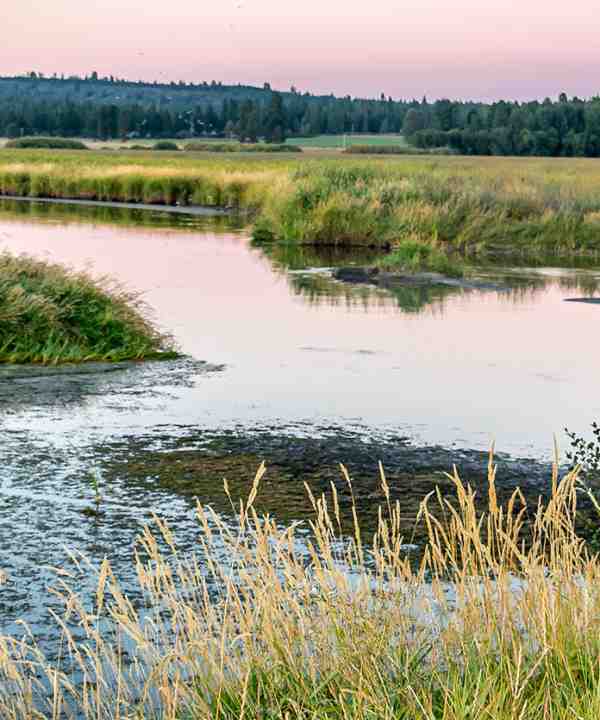December 19, 2018 | Stanford News Service | News
Moved to action by images of Ohio’s Cuyahoga River on fire in 1972, U.S. legislators passed the Clean Water Act to protect the country’s “navigable waters.” The Trump administration recently proposed to redefine the term so that it excludes from protection large amounts of wetlands and thousands of miles of waterways. Proponents of the change say it will bring clarity to questions around construction and agriculture permitting in wetlands and streams. Critics argue the rollback will make it harder to oversee resources critical to ecosystem health, storm protection and other valuable natural services.
On Jan. 10, the U.S. Environmental Protection Agency and the Army will hold a public webcast(link is external) to explain key elements of the proposal (registration for the webcast is limited to 2,000 attendees).
Leon Szeptycki, executive director of Stanford’s Water in the West program, discussed the complex legal history around the Clean Water Act’s definition of navigable waters, or “waters of the U.S.,” and potential impacts of the proposed reduction in the law’s scope.
What is the controversy around the definition of waters of the U.S. (WOTUS)?
The Clean Water Act regulates a number of different types of conduct with respect to “navigable waters.” It goes on to define “navigable waters” to mean “the waters of the United States,” without providing any guidance about how to interpret that concept. This quirky drafting produced controversy from the statute’s first days. Litigation in the 1970s ultimately resulted in a definition of the term that, with a few modifications, governed the Clean Water Act’s jurisdictional footprint for about 20 years.
The Supreme Court has issued three separate opinions on the meaning of the term, most recently in 2006. In that case, Justice Antonin Scalia wrote an opinion joined by three justices that argued for a narrow definition that included permanent water bodies and adjacent wetlands. Justice Anthony Kennedy joined those four justices in voting for a new definition, but wrote a separate opinion that argued for a definition that would be based on a “significant nexus” with navigable waters.
What is the current status of WOTUS under the Clean Water Act?
In 2015, the EPA finalized Clean Water Act regulations based largely on the Kennedy definition that interpreted waters of the United States to include many streams that only flow during the wet season or only after heavy rains. Those regulations also included wetlands that are not directly adjacent to permanent bodies of water, so long as those wetlands have a significant ecological or hydrological nexus to permanent, navigable water bodies. That regulation augmented Kennedy’s definition with a great deal of data and analysis regarding important connections between smaller streams and more isolated wetlands, as well as water bodies considered navigable. Last year, the EPA proposed delaying that regulation, and now it has proposed a narrower definition of waters of the United States, based more on the Scalia definition.
Why has the WOTUS designation been so hotly contested?
All of this is highly controversial because the Clean Water Act requires a permit to deposit “fill material” into waters of the United States. A wide variety of human activities often need permits to fill streams and wetlands, including real estate development, transportation infrastructure, oil and gas pipelines and some agriculture. How many waters are actually protected affects the regulatory burden on a large number of landowners and businesses.
What is the nature of the Trump administration’s proposed changes to the WOTUS definition?
The definition proposed by the Trump administration is much narrower than those that have been used by the EPA and the Army Corps of Engineers (the agency responsible for issuing permits for the discharge of dredged or fill material into waters). The new definition would cover only permanent bodies of water, some streams that predictably flow during the wet season, and wetlands directly adjacent to permanent bodies of water. An EPA document obtained by E&E News estimates this would reduce the number of wetlands protected by the Clean Water Act by 51 percent and the number of streams by 18 percent.
What are the potential impacts of the rollback?
Most, if not all, isolated wetlands and ephemeral and intermittent streams are important habitat for migratory birds, fish, amphibians and other species. Virtually all wetlands and streams are hydrologically connected to other water bodies in some way. The U.S. Fish and Wildlife Service estimates that between the 1780s and the 1980s, we destroyed more than 50 percent of the wetlands in the lower 48 states. The current rate of loss is estimated to be approximately 80,000 acres – an area about 95 times the size of New York’s Central Park – a year. A narrower definition of waters of the United States has the potential to accelerate that rate of loss.
Szeptycki is also professor of the practice at the Stanford Woods Institute for the Environment. Water in the West is a joint program of Woods and the Bill Lane Center for the American West.


![[Woods Logo]](/sites/default/files/logos/footer-logo-woods.png)
![[Bill Lane Center Logo]](/sites/default/files/logos/footer-logo-billlane.png)